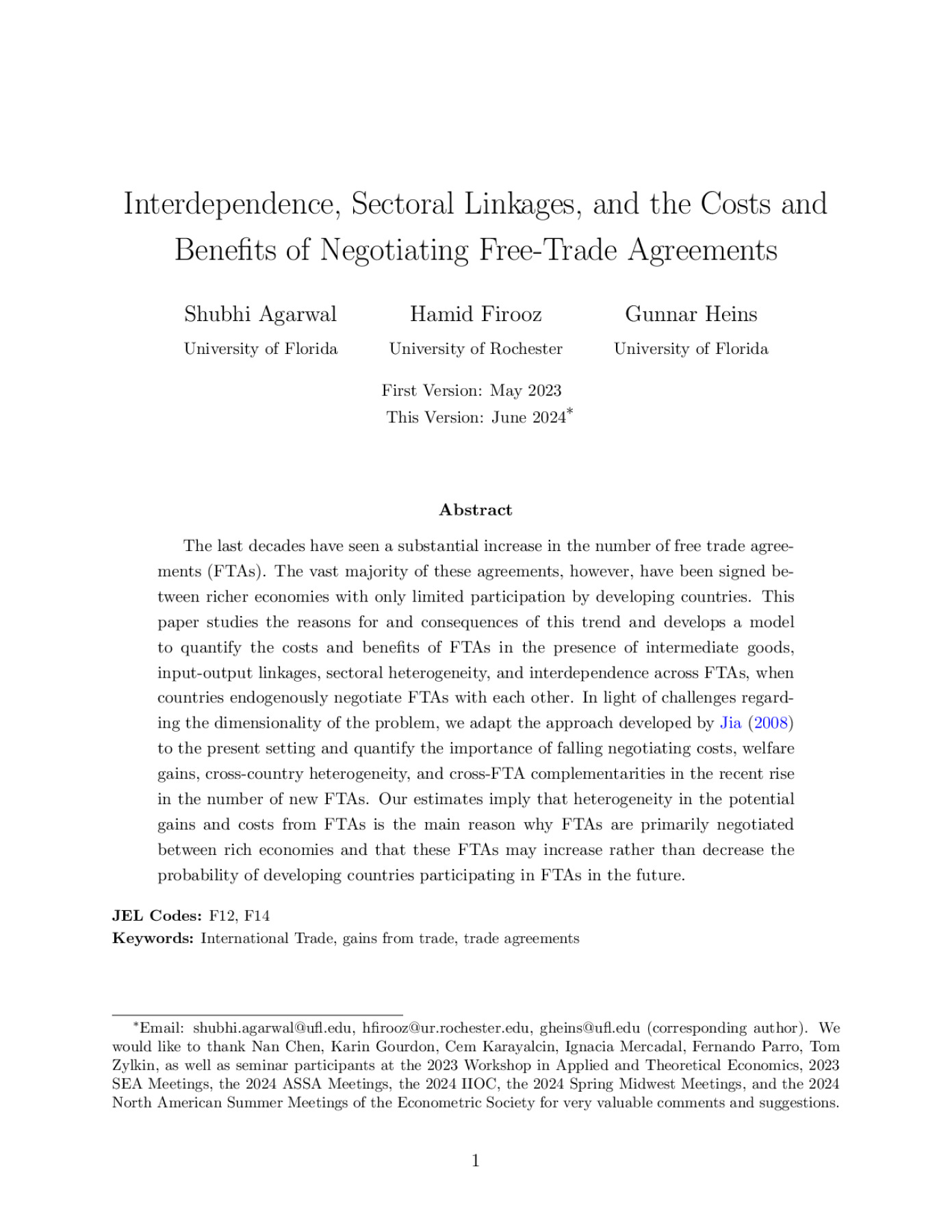2024 North American Summer Meeting: June, 2024
Interdependence, Sectoral Linkages, and the Costs and Benefits of Negotiating Free-Trade Agreements
Gunnar Heins, Hamid Firooz, Shubhi Agarwal
The last decades have seen a substantial increase in the number of free trade agreements (FTAs). The vast majority of these agreements, however, have been signed between richer economies with only limited participation by developing countries. This paper studies the reasons for and consequences of this trend and develops a model to quantify the costs and benefits of FTAs in the presence of intermediate goods, input-output linkages, sectoral heterogeneity, and interdependence across FTAs, when countries endogenously negotiate FTAs with each other. In light of challenges regarding the dimensionality of the problem, we adapt the approach developed by Jia (2008) to the present setting and quantify the importance of falling negotiating costs, welfare gains, cross-country heterogeneity, and cross-FTA complementarities in the recent rise in the number of new FTAs. Our estimates imply that heterogeneity in the potential gains and costs from FTAs is the main reason why FTAs are primarily negotiated between rich economies and that these FTAs may increase rather than decrease the probability of developing countries participating in FTAs in the future.
Preview

















































